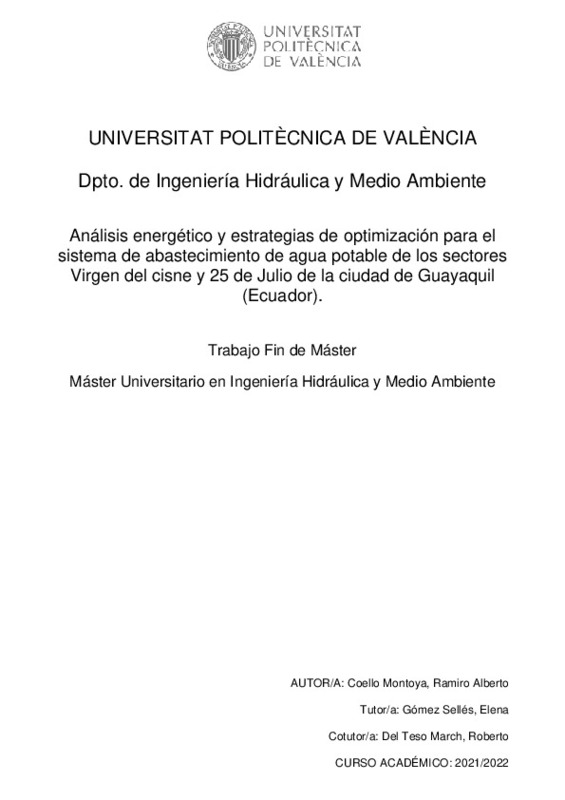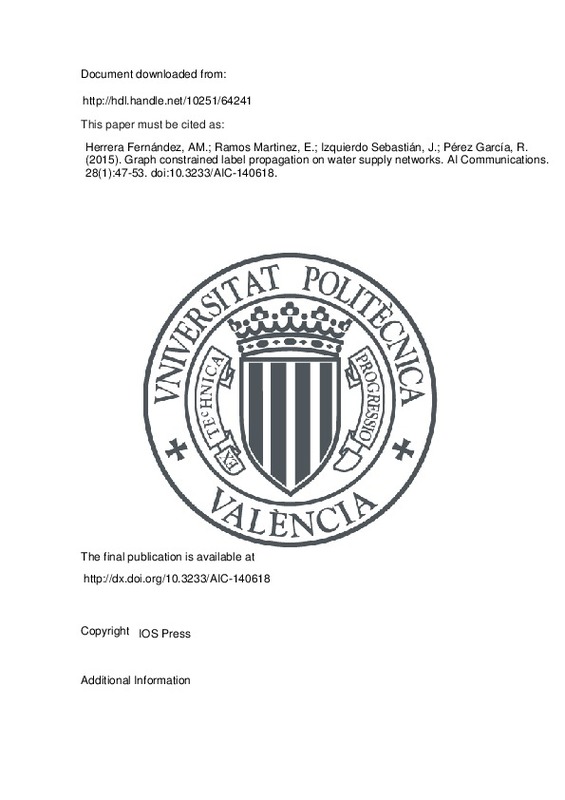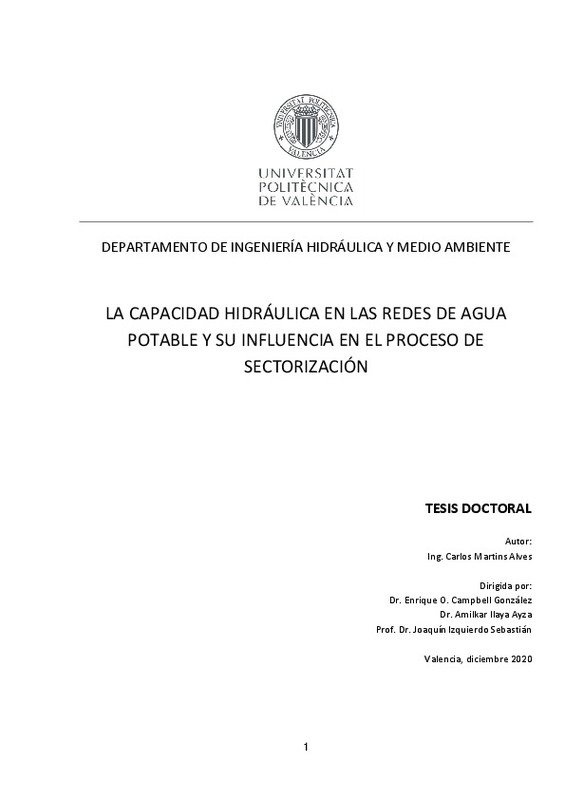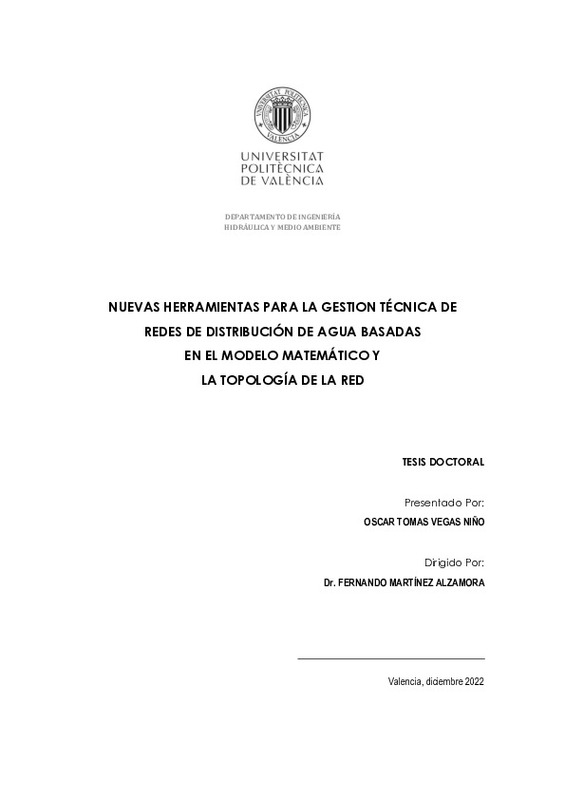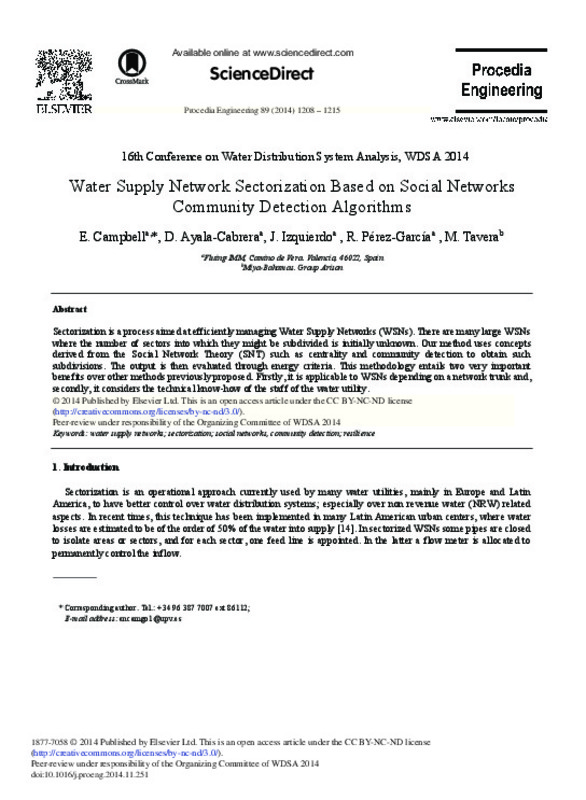

Listar por palabra clave "Water supply networks"
RiuNet: Repositorio Institucional de la Universidad Politécnica de Valencia
- RiuNet repositorio UPV
- :
- Listar por palabra clave
JavaScript is disabled for your browser. Some features of this site may not work without it.
Buscar en RiuNet
Listar
Mi cuenta
Ayuda RiuNet
Admin. UPV
Listar por palabra clave "Water supply networks"
Mostrando ítems 1-8 de 8
-
Coello Montoya, Ramiro Alberto (Universitat Politècnica de València, 2022-11-29)[ES] Ante el estrés hídrico y el deterioro del medio ambiente debido a los gases de efecto de invernadero, se hace imperativo trabajar sobre el nexo agua y energía de manera conjunta. El uso de energía en los sistemas de ...
-
Gutiérrez-Pérez, Joanna A.; Herrera Fernández, Antonio Manuel; Pérez García, Rafael; Ramos Martínez, Eva (Elsevier, 2013-04)[EN] We introduce a methodology based on spectral measurements of graph theory to establish the relative importance of areas in water supply networks (WSNs). To achieve an efficient vulnerability analysis, we have made a ...
-
Herrera Fernández, Antonio Manuel; Ramos Martínez, Eva; Izquierdo Sebastián, Joaquín; Pérez García, Rafael (IOS Press, 2015)In many real-world applications we have at our disposal a limited number of inputs in a theoretical database with full information, and another part of experimental data with incomplete knowledge for some of their features. ...
-
Martins Alves, Carlos (Universitat Politècnica de València, 2021-01-21)[ES] La sectorización en sectores hidrométricos de las redes de abastecimiento de agua potable ha sido, a lo largo de los últimos años, una de las técnicas más empleadas para ubicar y controlar las fugas. Esto es de vital ...
-
Herrera Fernández, Antonio Manuel; Izquierdo Sebastián, Joaquín; Pérez García, Rafael; Montalvo Arango, Idel (ELSEVIER SCI LTD, 2012)[EN] The division of a water supply network (WSN) into isolated supply clusters aims at improving the management of the whole system. This paper deals with the application of spectral clustering to achieve this aim. A ...
-
Vegas Niño, Óscar Tomás (Universitat Politècnica de València, 2023-03-10)[ES] Debido a la escasez del recurso hídrico que azota a muchos países del mundo, los gobiernos están implementando políticas públicas para que las entidades gestoras del servicio de agua potable, juntamente con las ...
-
Martínez-Rodríguez, José B.; Montalvo Arango, Idel; Izquierdo Sebastián, Joaquín; Pérez García, Rafael (Springer Verlag (Germany), 2011-03)Urban water supply is a high priority service and so looped networks are extensively used in order to considerably reduce the number of consumers affected by a failure. Looped networks may be redundant in connectivity and ...
-
Campbell, Enrique; Ayala Cabrera, David; Izquierdo Sebastián, Joaquín; Pérez García, Rafael; Tavera, Mario (Elsevier, 2014)Sectorization is a process aimed at efficiently managing Water Supply Networks (WSNs). There are many large WSNs where the number of sectors into which they might be subdivided is initially unknown. Our method uses concepts ...
Mostrando ítems 1-8 de 8

Universitat Politècnica de València. Unidad de Documentación Científica de la Biblioteca (+34) 96 387 70 85 · RiuNet@bib.upv.es


